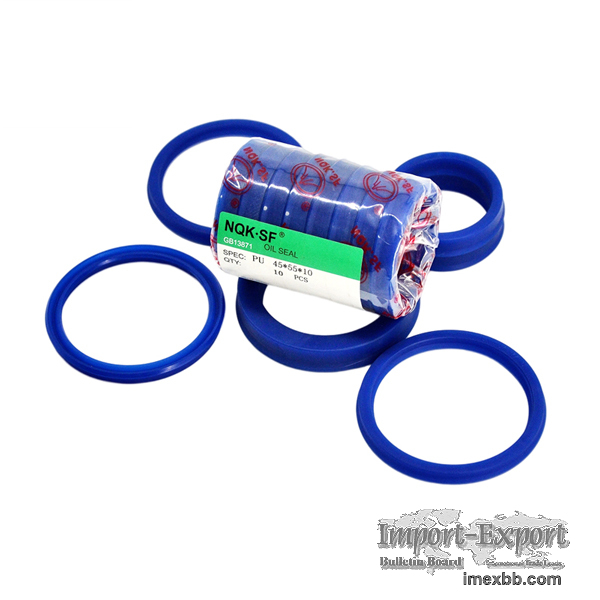 |
 |
Home > Offers to Sell > Others & Excess Inventory > Others
| Contact: | junyingliu |
|---|---|
| Company: | Xingtai Shanfeng special rubber products Co., Ltd |
| Hetou Industrial Zone, Renze District, Xingtai City, Hebei Province | |
| Xingtai City, Hebei | |
| China | |
| Phone: | 18713908608 |
| E-Mail: | |
| Date/Time: | 6/5/23 7:33 GMT |
Good quality manufacturer different size and material o ring
In the field of oil sealing, O-rings are widely used for their
effectiveness in creating reliable and leak-free seals. One important aspect to
consider when working with O-rings is the distinction between internal and
external pressure. This article aims to provide insights into the differences
between these two pressure zones in O-rings.
Internal Pressure in O-Rings:
Internal pressure refers to the force exerted on the inside diameter of the
O-ring when the system is pressurized. In applications where the fluid or gas
being sealed is under pressure, the O-ring experiences internal pressure. This
pressure pushes the O-ring against the gland walls, enhancing the sealing
effect.
Key considerations regarding internal pressure in O-rings include:
Squeezing Effect: The internal pressure causes the O-ring to deform
slightly, resulting in a "squeezing effect." The material of the O-ring,
typically elastomers like nitrile rubber or silicone, compresses against the
gland walls, creating a tight seal. The elasticity and resilience of the O-ring
material allow it to maintain the seal under varying internal pressures.
Deformation and Extrusion: At higher internal pressures, O-rings can
undergo deformation and extrusion. Deformation occurs when the O-ring is
compressed beyond its elastic limit, potentially resulting in reduced sealing
performance. Extrusion, on the other hand, refers to the process where the O-
ring material is forced into gaps or clearances within the gland, compromising
the seal integrity.
External Pressure in O-Rings:
External pressure, in contrast, refers to the force exerted on the outside
diameter of the O-ring. This pressure acts against the O-ring from the external
environment or system. External pressure can influence the sealing
effectiveness and durability of O-rings.
Key considerations regarding external pressure in O-rings include:
Support and Confinement: External pressure provides support and confinement
to the O-ring, helping it maintain its shape and position within the gland.
This support prevents the O-ring from being displaced or extruded into gaps,
ensuring a consistent and effective seal.
Balancing Internal Pressure: External pressure can help balance the
internal pressure acting on the O-ring. By exerting pressure on the outside
diameter, the external pressure assists in resisting the squeezing effect
caused by internal pressure, thereby improving the overall sealing performance.
Understanding the differences between internal and external pressure is
crucial when working with O-rings for oil sealing applications. Internal
pressure refers to the force exerted on the inside diameter, enhancing the
sealing effect but potentially causing deformation or extrusion. External
pressure acts on the outside diameter, providing support, confinement, and
balancing the internal pressure. By considering these factors, engineers and
technicians can select and design O-ring seals that effectively withstand
internal and external pressure, ensuring reliable and long-lasting sealing
solutions in various industrial applications.
Minimum Order: 500 pieces
SOURCE: Import-Export Bulletin Board (https://www.imexbb.com/)
Similar Products:Not exactly what you are looking for? Post an Offer to Buy!
![]()
© 1996-2010 IMEXBB.com. All rights reserved.
|
|
|






